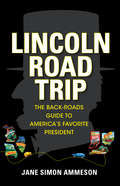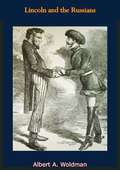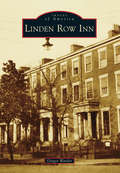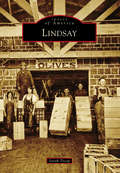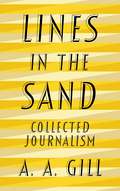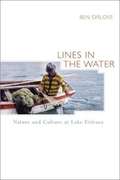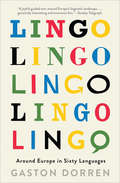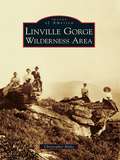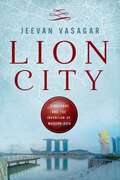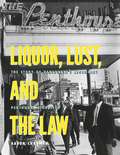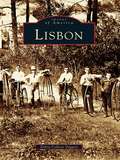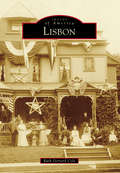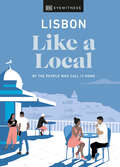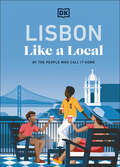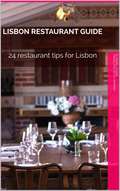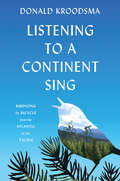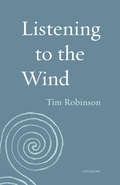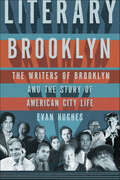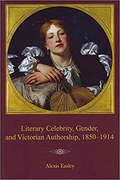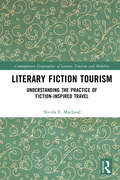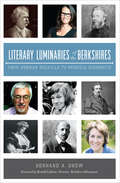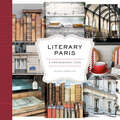- Table View
- List View
Lincoln Road Trip: The Back-Roads Guide to America’s Favorite President
by Jane Simon AmmesonAmerica's favorite president sure got around. From his time as a child in Kentucky, as a lawyer in Illinois, and all the way to the Oval Office, Abraham Lincoln toured across the countryside and cities and stayed at some amazing locations. In Lincoln Road Trip: The Back-Roads Guide to America's Favorite President, Jane Simon Ammeson will help you step back into history by visiting the sites where Abe lived and visited. This fun and entertaining travel guide includes the stories behind the quintessential Lincoln sites, but also takes you off the beaten path to fascinating and lesser-known historical places. Visit the Log Inn in Warrenton, Indiana (now the oldest restaurant in the state), which opened in 1825 and where Lincoln stayed in 1844, when he was campaigning for Henry Clay. You can also visit key places in Lincoln's life, like the home of merchant Colonel Jones, who allowed a young Abe to read all his books, or Ward's Academy, where Mary Todd Lincoln attended school. Along with both famous and overlooked places with Lincoln connections, Jane Simon Ammeson profiles nearby attractions to round out your trip, like Holiday World & Splashin' Safari, a third-generation family-owned amusement park that can be partnered with a trip to the Lincoln Boyhood National Memorial and Lincoln State Park. Featuring new and exciting Lincoln tales from Springfield, IL; Beardstown, KY; Booneville, IN; Alton, IL; and many more, Lincoln Road Trip is a fun adventure through America's heartland that will bring Lincoln's incredible story to life.
Lincoln and the Russians
by Albert A. WoldmanTHE STORY OF LINCOLN AND RUSSIA—VIRTUALLY AN UNKNOWN CHAPTER IN THE LINCOLN SAGALincoln and the Russians, first published in 1952, is the first volume to explore extensively a much neglected aspect of American diplomatic relations: American-Russian relations prior to the First World War. It is only since the Russian Revolution of 1917 that emphasis has been placed on the subject of American-Russian diplomacy; yet Russia played an important part in achieving Lincoln’s goal in the Civil War: the preservation of Union. Although the purchase of Alaska is a familiar story, the story preceding it reveals an aspect of history in which Russia contributed materially toward preventing British and French recognition of and aid to the confederacy.Author Albert A. Woldman has investigated thoroughly the reports to St. Petersburg of Eduard de Stoeckl, Russian Minister to the United States. He has quoted much of the correspondence which passed between the American and Russian diplomatic forces, and the result is a unique contribution to Americana and Lincolniana.
Lincoln's Springfield Neighborhood
by Richard E. Hart Bonnie E PaullWhen an emotional Abraham Lincoln took leave of his Springfield neighbors, never to return, his moving tribute to the town and its people reflected their profound influence on the newly elected president. His old neighborhood still stands today as a National Historic Site. The story of the life Lincoln and his family built there returns to us through the careful work of authors Bonnie E. Paull and Richard E. Hart. Journey back in time and meet this diverse but harmonious community as it participated in the business of everyday living while gradually playing a larger role on the national stage.
Linden Row Inn
by Ginger WarderIncluded in the National Register of Historic Places, the collection of Greek Revival row houses that make up the Linden Row Inn have played a significant role in the history of Richmond, Virginia, for two centuries. As a child, Edgar Allan Poe played in the private garden that occupied this site, and he later courted his first love, Elmira Royster, among the roses and linden trees. During the Civil War, Linden Row was a meeting place for leaders and supporters of the Confederacy; later, it was home to a prestigious girls' school, whose pupils included Irene and Nancy Langhorne, known in later years as the Gibson Girl and Lady Nancy Astor. In 1922, two of the original ten houses were torn down and replaced by the Medical Arts Building. In 1950, local preservationist Mary Wingfield Scott purchased the remaining houses to save them from the wrecking ball, donating them in 1980 to the Historic Richmond Foundation. In 1988, under the supervision of the foundation, seven of the eight remaining houses were renovated and restored to become the Linden Row Inn, which still welcomes travelers today.
Lindsay (Images of America)
by Sarah TroopA picturesque town nestled among the wildflower-covered foothills of the Sierras, Lindsay is the epitome of the ideal California life--one of health, wealth and sunshine. Lindsay became the heart of the state's second gold rush, when large-scale farming became popular, by hitting the mother lode with oranges. With over 16 citrus packinghouses, people initially came to Lindsay to seek their fortune. The success of the citrus groves attracted not only many skilled Japanese farmers but also many immigrants who were new to the trade. By the 1920s, Lindsay's most famous crop became Lindsay Ripe Olives. Lindsay is a town of surprising inventions and innovations that revolutionized agriculture, citrus farming, irrigation, and especially the olive industry.
Lines in the Sand: Collected Journalism
by Adrian Gill'By miles the most brilliant journalist of our age' Lynn Barber'A golden writer' Andrew MarrA. A. Gill was rightly hailed as one of the greatest journalists of our time. This selection of some of his recent pieces, which he made himself before his untimely death, spans the last five years from all corners of the world. It shows him at his most perceptive, brilliant and funny.His subjects range from the controversial - fur - to the heartfelt - a fantastic crystallisation of what it means to be European. He tackles life drawing, designs his own tweed, considers boyhood through the prism of the Museum of Childhood, and spends a day at Donald Trump's university. In his final two articles he wrote with characteristic wit and courage about his cancer diagnosis - 'the full English - and the limits of the NHS. But more than any other subject, a recurring theme emerges in the overwhelming story of our times: the refugee crisis. In the last few years A. A. Gill wrote with compassion and anger about the refugees' story, giving us both its human face and its appalling context. The resulting articles are journalism at its finest and fiercest.
Lines in the Water: Nature and Culture at Lake Titicaca
by Benjamin S. OrlovePart ethnography, part natural history, part memoir, Ben Orlove's book reflects on the changes that have taken place over 30 years in the fishing villages along the shores of Lake Titicaca.
Lingo: Around Europe in Sixty Languages
by Gaston DorrenWhether you're a frequent visitor to Europe or just an armchair traveler, the surprising and extraordinary stories in Lingo will forever change the way you think about the continent, and may even make you want to learn a new language. Lingo spins the reader on a whirlwind tour of sixty European languages and dialects, sharing quirky moments from their histories and exploring their commonalities and differences. Most European languages are descended from a single ancestor, a language not unlike Sanskrit known as Proto-Indo-European (or PIE for short), but the continent's ever-changing borders and cultures have given rise to a linguistic and cultural diversity that is too often forgotten in discussions of Europe as a political entity. Lingo takes us into today's remote mountain villages of Switzerland, where Romansh is still the lingua franca, to formerly Soviet Belarus, a country whose language was Russified by the Bolsheviks, to Sweden, where up until the 1960s polite speaking conventions required that one never use the word you in conversation, leading to tiptoeing questions of the form: Would herr generaldirektr Rexed like a biscuit? Spanning six millenia and sixty languages in bite-size chapters, Lingo is a hilarious and highly edifying exploration of how Europe speaks.
Linking Urban and Rural Tourism
by Carol Kline Susan L. SlocumDestinations rely on regional strategies to support and enhance the tourism product through regional partnerships and integration. Integrated tourism is defined as tourism that is explicitly linked to the economic, social, cultural, natural and human structures of the region in which it occurs. Integrated tourism has evolved to include numerous meanings and definitions, but generally includes a vertical business or industry approach. The first of its kind, this book applies a more inclusive approach to integration by providing insight into inclusive regional development strategies that support both the needs of urban and rural areas whilst enhancing the tourist experience, supporting the positive impacts of tourism and mitigating the negative. Regional studies tend to portray either an urban or rural focus without acknowledging that often these spaces constitute joint governance structures, similar historical and cultural roots, and economic dependencies. Sustainable tourism promotes sourcing locally, such as using rural agricultural products in urban tourism experiences. Furthermore, innovative rural marketing strategies linking tourism heritage, attractions, food and drink trails, and artisans with urban visitors are emerging. Including theoretical and applied research and international case studies, this will be a valuable resource to academics, students and practitioners working in tourism development and regional policy.
Linking Urban and Rural Tourism: Strategies in Sustainability
by Christina T. Cavaliere Kynda R. Curtis Dominic Lapointe Professor Kelly Bricker Professor Andrew Holden Karla Boluk Roslynn Brain Dana Clark John D. Delconte Lauren Duffy Marika Gon Gyunghoon Kim Chantell LaPan Katherine Lupton Leah Greden Mathews Robert Maitland Acha-Anyi Paul Nkemngu Christopher Proctor Alexis SolanoDestinations rely on regional strategies to support and enhance the tourism product through regional partnerships and integration. Integrated tourism is defined as tourism that is explicitly linked to the economic, social, cultural, natural and human structures of the region in which it occurs. Integrated tourism has evolved to include numerous meanings and definitions, but generally includes a vertical business or industry approach. The first of its kind, this book applies a more inclusive approach to integration by providing insight into inclusive regional development strategies that support both the needs of urban and rural areas whilst enhancing the tourist experience, supporting the positive impacts of tourism and mitigating the negative. Regional studies tend to portray either an urban or rural focus without acknowledging that often these spaces constitute joint governance structures, similar historical and cultural roots, and economic dependencies. Sustainable tourism promotes sourcing locally, such as using rural agricultural products in urban tourism experiences. Furthermore, innovative rural marketing strategies linking tourism heritage, attractions, food and drink trails, and artisans with urban visitors are emerging. Including theoretical and applied research and international case studies, this will be a valuable resource to academics, students and practitioners working in tourism development and regional policy.
Linville Gorge Wilderness Area
by Christopher BlakeFamed as "the Grand Canyon of the East," the Linville Gorge Wilderness Area is a rugged tract of more than 12,000 acres located in the Blue Ridge Mountains of Western North Carolina. Native Americans once referred to the Linville River as Eeseeoh, or "River of Cliffs," a name that accurately describes the river as it twists its way through the gorge under sheer rock faces and distinctive craggy peaks. Since the Native American ambush of the William Linville hunting party in 1766, the gorge has continued to make headlines with everything from movie filming to fatal accidents and forest fires. Today visitors flock to the natural attraction and enjoy a seemingly pristine, unexplored forest canyon. But the Linville Gorge has much more to offer than just breathtaking scenery. Its rich history has been documented by photographers since the 1870s, and it is through these old photographs that adventure seekers of the past are linked with nature enthusiasts of the present.
Lion City: Singapore and the Invention of Modern Asia
by Jeevan VasagarA compelling, illuminating and evocative history of Singapore—the world's most successful city-state.In 1965, Singapore's GDP per capita was on a par with Jordan. Now it has outstripped Japan. After the Second World War and a sudden rupture with newly formed Malaysia, Singapore found itself independent - and facing a crisis. It took the bloody-minded determination and vision of Lee Kuan Yew, its founding premier, to take a small island of diverse ethnic groups with a fragile economy and hostile neighbours and meld it into Asia's first globalised city. Lion City examines the different faces of Singaporean life - from education and health to art, politics and demographic challenges - and reveals how in just half a century, Lee forged a country with a buoyant economy and distinctive identity. It explores the darker side of how this was achieved too; through authoritarian control that led to it being dubbed 'Disneyland with the death penalty'. Jeevan Vasagar, former Singapore correspondent for the Financial Times, masterfully takes us through the intricate history, present and future of this unique diamond-shaped island one degree north of the equator, where new and old have remained connected. Lion City is a personal, insightful and definitive guide to the city, and how its extraordinary rise is shaping East Asia and the rest of the world.
Liquor, Lust and the Law
by Aaron ChapmanThe story of Vancouver's legendary Penthouse nightclub, founded in 1947 and active to this day. In its heyday, acts like Sammy Davis Jr and Nat King Cole performed, and stars like Frank Sinatra and Gary Cooper visited; in the 1970s, the club became infamous for its exotic dancers and a lurid history that included vice squads, politicians, and con men.
Lisbon (Images of America)
by Debra Colleen DaggettChief Warumbee sold Ten Miles Falls in 1678, and a century later, the first Lisbon settlement was established along the Androscoggin River. The water's mammoth power generated thousands of jobs and shaped a way of life for Lisbon's earliest citizens. Near beautiful cascading waterfalls, European immigrants found a magnificent place to share hard work, old-world customs, family traditions, and pride in their new home. Lisbon's history is as intricately woven as its fine Worumbo cloth. The town has suffered ravaging floods and fires, yet it has triumphed with the indomitable spirit of the community. In this volume, vivid photographs tell fascinating stories and carefully preserve the past for future generations.
Lisbon (Images of America)
by Ruth Gerrard ColeCentered in the midst of the Columbiana County hills, Lisbon was founded in 1803. High hopes for growth and prosperity were first realized through industries producing iron, coal, and pottery; however, even with modern inventions, fascinating people, and hopes for a successful canal, the dream of becoming a city never materialized. During the Civil War, Confederate general John Hunt Morgan and his raiders threatened the community with invasion, but he ultimately surrendered to Union forces. Many political careers had links to Lisbon, including those of Congressman and Copperhead Clement Vallandigham, Sen. Marcus Hanna, Pres. William McKinley, and Associate Justice of the Supreme Court John Clarke. Intriguing families such as the "Fighting McCooks" added to the community's history. Victorian homes abound, and today effort is put into the restoration of other Lisbon homes as well as businesses, creating genuine charm and interest while commercial and industrial progress stretches northward.
Lisbon Like a Local: By the People Who Call It Home (Local Travel Guide)
by DK Eyewitness Lucy Bryson Joana TabordaKeen to explore a different side of Lisbon? Like a Local is the book for you.This isn&’t your ordinary travel guide. Beyond the pretty pastel houses and trundling trams are vintage kiosks, dance classes and secret viewpoints – and that&’s where this book takes you. Turn the pages to discover- The small businesses and community strongholds that add character to this vibrant city, recommended by true locals.- 6 themed walking tours dedicated to specific experiences such as rooftop bars and scenic city strolls.- A beautiful gift book for anyone seeking to explore Lisbon.- Helpful &‘what3word&’ addresses, so you can pinpoint all the listed sights.Compiled by two proud locals, this stylish travel guide is packed with Lisbon&’s best experiences and secret spots, handily categorized to suit your mood and needs.Whether you&’re a restless Lisboeta on the hunt for a new hangout, or a visitor keen to discover a side you won&’t find in traditional guidebooks, Lisbon Like A Local will give you all the inspiration you need. About Like A Local:These giftable and collectible guides from DK Eyewitness are compiled exclusively by locals. Whether they&’re born-and-bred or moved to study and never looked back, our experts shine a light on what it means to be a local: pride for their city, community spirit and local expertise. Like a Local will inspire readers to celebrate the secret as well as the iconic – just like the locals who call the city home. Looking for another guide to Lisbon? Explore further with our DK Eyewitness or Top 10 guides to Lisbon.
Lisbon Like a Local: By the People Who Call It Home (Local Travel Guide)
by DK TravelThis isn’t your ordinary travel guide. Beyond the pretty pastel houses and trundling trams are vintage kiosks, dance classes and secret viewpoints - and that's where this book takes you. Turn the pages to discover: The small businesses and community strongholds that add character to this vibrant city, recommended by true locals6 themed walking tours dedicated to specific experiences such as rooftop bars and scenic city strollsA beautiful gift book for anyone seeking to explore LisbonHelpful what3word addresses, so you can pinpoint all the listed sightsA thoughtfully updated second edition, including new places to visit Compiled by three proud locals, and revised and updated for 2025, this stylish travel guide is packed with Lisbon’s best experiences and secret spots, handily categorized to suit your mood and needs.Whether you’re a restless Lisboeta on the hunt for a new hangout, or a visitor keen to discover a side you won’t find in traditional guidebooks, Lisbon Like A Local will give you all the inspiration you need.About Like A Local:These giftable and collectable guides from DK are compiled exclusively by locals. Whether they’re born-and-bred or moved to study and never looked back, our experts shine a light on what it means to be a local: pride for their city, community spirit and local expertise. Like a Local will inspire readers to celebrate the secret as well as the iconic – just like the locals who call the city home.Looking for another guide to Lisbon? Discover’s DK’s range of travel guides, from Top 10s that’ll fit in your pocket to comprehensive guides perfect for long trips.
Lisbon Restaurant Guide: 24 restaurant tips for Lisbon (Lissabon4Insider #1)
by Daniel HagenIn the Lisbon Restaurant Guide we (Daniel and Angelica Hagen) walk with you through the different districts of Lisbon and show you all the restaurants that we love. Whether you want to eat cheaply or go out on the town, the Lisbon Restaurant Guide opens the door to many great experiences. The culinary diversity of this city is almost immeasurable! From hearty Portuguese cooking to exotic Asian delicacies to the fiery and delicious cuisines of Africa and Brazil — we only introduce you to those establishments that in our opinion offer real added value. Come with us for fine dining over the roofs of Príncipe Real, head to Santos to gobble up the t-bone steaks, or join us on a culinary journey through time in one of the most beautiful mansions that Alfama has to offer. You can sit outside in Baixa listening to cool reggae while sipping a spiritual cocktail and having a few snacks, or in the Chiado district you can savor dishes at reasonable prices from a chef with two Michelin stars. What’s more, our guide proves that Jesus comes from Goa, and we show you where you can bless yourself with a Little Prayer or an Ave Maria for breakfast. Finally, we drink a glass of wine with you at one of our favorite wine bars in Alfama. If you’re hungry for more, we have many restaurants, bars and hotels, as well as general information about Lisbon, on our blog: www.lissabon4insider.com. Enjoy every moment, every step and every bite! See you in Lisbon . . .
Listening to a Continent Sing: Birdsong by Bicycle from the Atlantic to the Pacific
by Donald KroodsmaJoin birdsong expert Donald Kroodsma on a ten-week, ten-state bicycle journey as he travels with his son from the Atlantic to the Pacific, lingering and listening to our continent sing as no one has before. On remote country roads, over terrain vast and spectacular, from dawn to dusk and sometimes through the night, you will gain a deep appreciation for the natural symphony of birdsong many of us take for granted. Come along and marvel at how expressive these creatures are as Kroodsma leads you west across nearly five thousand miles--at a leisurely pace that enables a deep listen.Listening to a Continent Sing is also a guided tour through the history of a young nation and the geology of an ancient landscape, and an invitation to set aside the bustle of everyday life to follow one's dreams. It is a celebration of flowers and trees, rocks and rivers, mountains and prairies, clouds and sky, headwinds and calm, and of local voices and the people you will meet along the way. It is also the story of a father and son deepening their bond as they travel the slow road together from coast to coast.Beautifully illustrated throughout with drawings of birds and scenes and featuring QR codes that link to audio birdsong, this poignant and insightful book takes you on a travel adventure unlike any other--accompanied on every leg of your journey by birdsong.
Listening to the Wind
by Tim RobinsonA mapmaker’s vivid journey through the geography, ecology, and history of Ireland’s Connemara region.Here is Connemara, experienced at a walker’s pace. From cartographer Tim Robinson comes the second title in the Seedbank series, a breathtakingly intimate exploration of one beloved place’s geography, ecology, and history.We begin with the earth right in front of his boots, as Robinson unveils swaths of fiontarnach—fall leaf decay. We peer from the edge of the cliff where Robinson’s house stands on rickety stilts. We closely examine an overgrown patch of heather, a flush of sphagnum moss. And so, footstep by footstep, moment by moment, Robinson takes readers deep into this storied Irish landscape, from the “quibbling, contentious terrain” of Bogland to the shorelines of Inis Ní to the towering peaks of Twelve Pins.Just as wild and essential as the countryside itself are its colorful characters, friends and legends and neighbors alike: a skeletal, story-filled sheep farmer; an engineer who builds bridges, both physical and metaphorical; a playboy prince and cricket champion; and an enterprising botanist who meets an unexpected demise. Within a landscape lie all other things, and Robinson rejoices in the universal magic of becoming one with such a place, joining with “the sound of the past, the language we breathe, and our frontage onto the natural world.” Situated at the intersection of mapmaking and mythmaking, Listening to the Wind is at once learned and intimate, elegiac and magnificent—an exceptionally rich “book about one place which is also about the whole world” (Robert Macfarlane).“Visitors to Connemara, that expanse of stony beauty in the west of Ireland, are often struck by its stillness. [This] collection of essays succeeds in the difficult task of staying true to the verities of a place on to which so many fantasies have been projected.” —The Guardian
Literary Brooklyn: The Writers of Brooklyn and the Story of American City Life
by Evan HughesFor the first time, here is Brooklyn's story through the eyes of its greatest storytellers—Walt Whitman, Henry Miller, Truman Capote, Paula Fox, and others.Like Paris in the twenties or postwar Greenwich Village, Brooklyn today is experiencing an extraordinary cultural boom. In recent years, writers of all stripes—from Jhumpa Lahiri, Jennifer Egan, and Colson Whitehead to Nicole Krauss and Jonathan Safran Foer—have flocked to its patchwork of distinctive neighborhoods. But as literary critic and journalist Evan Hughes reveals, the rich literary life now flourishing in Brooklyn is part of a larger, fascinating history. With a dynamic mix of literary biography and urban history, Hughes takes us on a tour of Brooklyn past and present and reveals that hiding in Walt Whitman's Fort Greene Park, Hart Crane's Brooklyn Bridge, the raw Williamsburg of Henry Miller's youth, Truman Capote's famed house on Willow Street, and the contested streets of Jonathan Lethem's Boerum Hill is the story of more than a century of life in America's cities.Literary Brooklyn is a prismatic investigation into a rich literary inheritance, but most of all it's a deep look into the beloved borough, a place as diverse and captivating as the people who walk its streets and write its stories.“In a way, the literary history of Brooklyn is like a literary history of America itself—not because America is like Brooklyn, which it isn't, but because it is a story of a certain set of writers describing what they knew as America came into being, as the country invented a literature of its own.” ―Los Angeles Times“An engrossing cultural memoir.” ―New York Daily News
Literary Celebrity, Gender, and Victorian Authorship, 1850-1914
by Alexis EasleyThis study examines literary celebrity in Britain from 1850 to 1914. Through lively analysis of rare cultural materials, Easley demonstrates the crucial role of the celebrity author in the formation of British national identity. As Victorians toured the homes and haunts of famous writers, they developed a sense of shared national heritage. At the same time, by reading sensational accounts of writers’ lives, they were able to reconsider conventional gender roles and domestic arrangements. As women were featured in interviews and profiles, they were increasingly associated with the ephemerality of the popular press and were often excluded from emerging narratives of British literary history, which defined great literature as having a timeless appeal. Nevertheless, women writers were able to capitalize on celebrity media as a way of furthering their own careers and retelling history on their own terms. Press attention had a more positive effect on men’s literary careers since they were expected to assume public identities; however, in some cases, media exposure had the effect of sensationalizing their lives, bodies, and careers. With the development of proto-feminist criticism and historiography, the life stories of male writers were increasingly used to expose unhealthy domestic relationships and imagine ideal forms of British masculinity. The first section of Literary Celebrity explores the practice of literary tourism in Victorian Britain, focusing specifically on the homes and haunts of Charles Dickens, Christina Rossetti, George Eliot, Elizabeth Barrett Browning, and Harriet Martineau. This investigation incorporates analysis of fascinating cultural texts, including maps, periodicals, and tourist guidebooks. Easley links the practice of literary tourism to a variety of cultural developments, including nationalism, urbanization, spiritualism, the women’s movement, and the expansion of popular print culture. The second section provides fresh insight into the ways that celebrity culture informed the development of Victorian historiography. Easley demonstrates how women were able to re-tell history from a proto-feminist perspective by writing contemporary history, participating in architectural reform movements, and becoming active in literary societies. In this chapter she returns to the work of Harriet Martineau and introduces a variety of lesser-known contributors to the field, including Mary Gillies and Mary Ward. Literary Celebrity concludes with a third section focused on the expansion of celebrity media at the fin de siècle. These chapters and a brief coda link the popularization of celebrity news to the de-canonization of women writers, the professionalization of medicine, the development of the open space movement, and the institutionalization of English studies. These investigations elucidate the role of celebrity media in the careers of Charlotte Robinson, Marie Corelli, Mary Braddon, Harriet Martineau, Thomas Carlyle, Ernest Hart, and Octavia Hill. Published by University of Delaware Press. Distributed worldwide by Rutgers University Press.
Literary Fiction Tourism: Understanding the Practice of Fiction-Inspired Travel (ISSN)
by Nicola E. MacLeodThis timely and insightful book critically reviews the synergistic relationship between books, literary culture, and the practices of tourism.The volume sets literary fiction tourism within its historical, theoretical, and managerial context and explores the current provision of literary tourism sites and experiences. It focuses on literary fiction and the interplay between imaginative worlds, literary reputation, and tourism. The volume explores a variety of literary tourism forms in a global context such as biographical sites, imaginative sites, literary trails, and book towns, identifying the challenges associated with interpreting and managing them for visitors. Current international case studies allow readers to understand this most ancient of touristic activity within its contemporary context. This book offers new insight into the diversity of the literary tourism landscape, the range of experiences and visitors and the variety of interpretive responses that may be appropriate. The relationship between literary fiction and other forms of media such as film and digital culture are also explored.International in scope, this volume will be of interest to students of tourism, heritage studies, cultural studies, and media studies, as well those interested in literary tourism more specifically.
Literary Luminaries of the Berkshires: From Herman Melville to Patricia Highsmith
by Bernard A. DrewThe literary history behind this beautiful mountain region. The Massachusetts Berkshires have long been a mecca for literary greats, from Henry Wadsworth Longfellow and Edith Wharton to Sinclair Lewis and Joan Ackermann. The Green River in Great Barrington inspired William Cullen Bryant&’s poetry. Charles Pierce Burton&’s childhood hometown, Adams, became the setting for his frolicking Boys of Bob&’s Hill children&’s books. During an interlude in Lenox, Patricia Highsmith consulted a local undertaker for details to use in The Talented Mr. Ripley. In this book, Bernard A. Drew brings together a fascinating chronicle of some 250 wordsmiths who took inspiration from the hills and valleys of the Berkshires.
Literary Paris: A Photographic Tour
by Nichole RobertsonAn essential addition to the library of every booklover and Francophile, this unique love letter to Paris offers an immersive photographic stroll through its literary delights, from historic bookstores to hidden cafes. Paris in Color author Nichole Robertson turns her lens onto spots both legendary and little-known, highlighting quiet moments that every booklover savors—inviting cafe scenes, comfy chairs, enticing book nooks—and the weathered charm of places steeped in centuries of literary history. Quotes by great writers such as Balzac and Colette are interspersed throughout, while a timeline and an index of featured locations round out the volume. This bijou treasure of a book will inspire every creative soul who dreams of following in the footsteps of their literary heroes.
